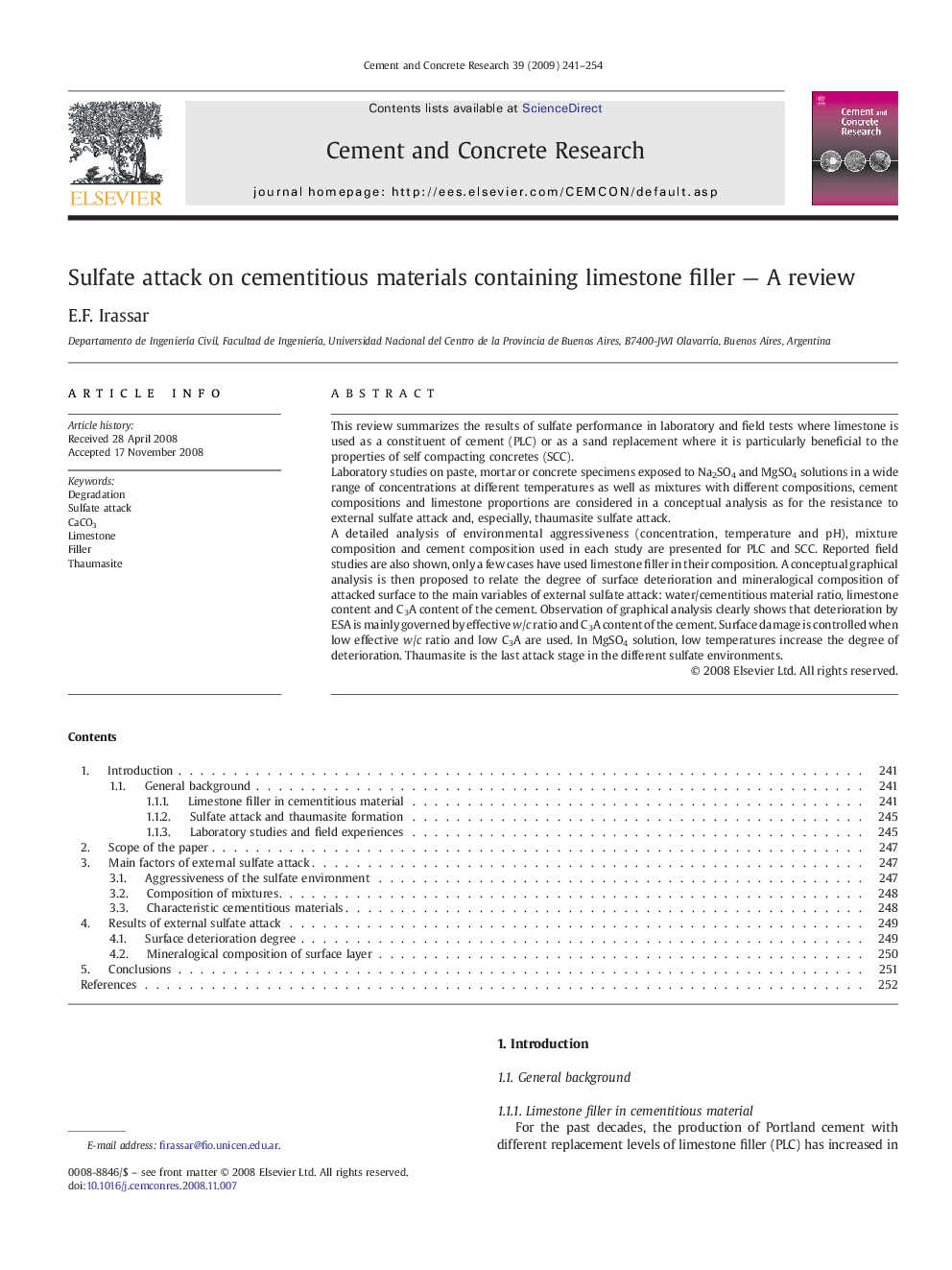| Article ID | Journal | Published Year | Pages | File Type |
|---|---|---|---|---|
| 1457465 | Cement and Concrete Research | 2009 | 14 Pages |
This review summarizes the results of sulfate performance in laboratory and field tests where limestone is used as a constituent of cement (PLC) or as a sand replacement where it is particularly beneficial to the properties of self compacting concretes (SCC).Laboratory studies on paste, mortar or concrete specimens exposed to Na2SO4 and MgSO4 solutions in a wide range of concentrations at different temperatures as well as mixtures with different compositions, cement compositions and limestone proportions are considered in a conceptual analysis as for the resistance to external sulfate attack and, especially, thaumasite sulfate attack.A detailed analysis of environmental aggressiveness (concentration, temperature and pH), mixture composition and cement composition used in each study are presented for PLC and SCC. Reported field studies are also shown, only a few cases have used limestone filler in their composition. A conceptual graphical analysis is then proposed to relate the degree of surface deterioration and mineralogical composition of attacked surface to the main variables of external sulfate attack: water/cementitious material ratio, limestone content and C3A content of the cement. Observation of graphical analysis clearly shows that deterioration by ESA is mainly governed by effective w/c ratio and C3A content of the cement. Surface damage is controlled when low effective w/c ratio and low C3A are used. In MgSO4 solution, low temperatures increase the degree of deterioration. Thaumasite is the last attack stage in the different sulfate environments.
